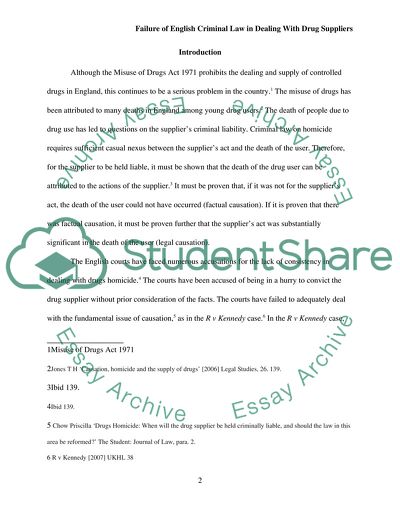Cite this document
(English Criminal Law Fails To Deal With the Drug Supplier Coursework, n.d.)
English Criminal Law Fails To Deal With the Drug Supplier Coursework. https://studentshare.org/law/1857609-english-criminal-law-fails-to-deal-with-the-drug-supplier-whose-client-dies-after-voluntarily-self-injecting-or-ingesting-in-a-consistent-and-principled-manner
English Criminal Law Fails To Deal With the Drug Supplier Coursework. https://studentshare.org/law/1857609-english-criminal-law-fails-to-deal-with-the-drug-supplier-whose-client-dies-after-voluntarily-self-injecting-or-ingesting-in-a-consistent-and-principled-manner
(English Criminal Law Fails To Deal With the Drug Supplier Coursework)
English Criminal Law Fails To Deal With the Drug Supplier Coursework. https://studentshare.org/law/1857609-english-criminal-law-fails-to-deal-with-the-drug-supplier-whose-client-dies-after-voluntarily-self-injecting-or-ingesting-in-a-consistent-and-principled-manner.
English Criminal Law Fails To Deal With the Drug Supplier Coursework. https://studentshare.org/law/1857609-english-criminal-law-fails-to-deal-with-the-drug-supplier-whose-client-dies-after-voluntarily-self-injecting-or-ingesting-in-a-consistent-and-principled-manner.
“English Criminal Law Fails To Deal With the Drug Supplier Coursework”. https://studentshare.org/law/1857609-english-criminal-law-fails-to-deal-with-the-drug-supplier-whose-client-dies-after-voluntarily-self-injecting-or-ingesting-in-a-consistent-and-principled-manner.


